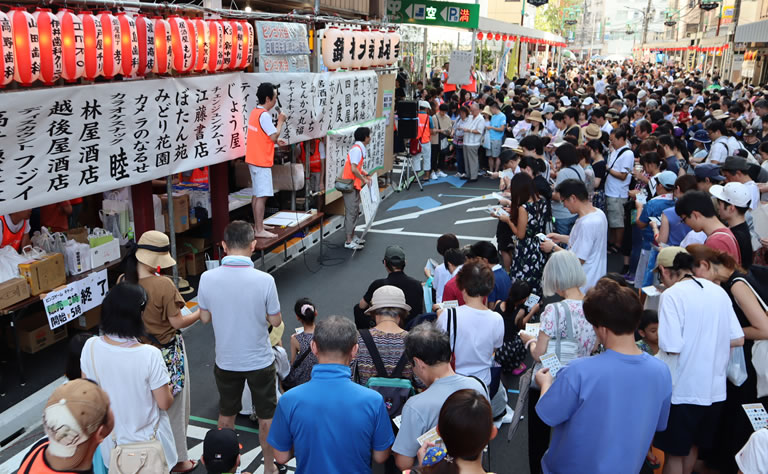Within the classic Rakugo (traditional Japanese comic storytelling) story called “Hori no uchi” from the Genroku era, a story handed down over the ages, the place name of Nabeya-Yokocho appeared, which indicates how old the name really is. A miniature diorama replica of Nabeya-Yokocho representing a scene during that era is displayed in the Ekoda folk museum. The name Nabeya originated from the fact that it was a very popular tea house, called “Nabeya”. It was a tea house (commercial rest stop for hungry, thirsty travelers) popular with worshippers who passed through on their way to the temple. The location was at Horinouchi on the street leading to the legendary talisman Ososhi-sama (Myohoji Temple, Suginami-ku).
The phrase Nabe-Yoko refers to the name of a shopping arcade area, suggesting it is one shopping area, but in fact there are four separate arcades. The arcade is just next to the Shin-Nakano station, Tokyo Metro Marunouchi-line. At the center of the arcade is the Nabeya-Yokocho intersection. The arcade runs about 600 meters from east to west on both sides of the Ome-Kaido street. Daily grocery, household and other shopping goods that locals are familiar with are sold here. In recent years both dining and drinking shops have increased to serve people who are on their way home from work, as well as many families also stopping to eat.
Shopping Arcade Events
From July 1 to 15. The Tanabata Sale.
Coupons are distributed by participating association shops depending on the value of goods sold. During these dates there are events such as on the 1st Saturday when rice flour dumplings with sweet beans and other sweet treats for kids are distributed for free on a limited basis, called the “Tanabata Event”.
From early December – large Lottery Bonus Sale.
During the event period customers are given lottery coupon tickets based on the value of their purchases. On the day of the lottery a total prize worth 1,500,000 yen is awarded, at the corner of the Nabeya-Yokocho crossing. From the beginning of December to the end of January the shops and street lights are brightly illuminated.

